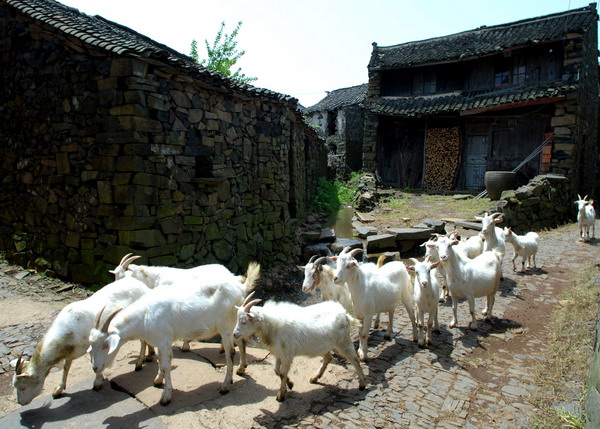Timeless beauty all set in stone
 |
|
Xu Peiliang/ for China Daily |
To build the houses, the rocks were piled up without concrete or plaster. In summer, the structures are ideal places to avoid the humid weather in South China, as the wind wafts through the walls.
"I have been living in a stone house since I was born," said Ye Hongmei, an 80-year-old villager. "There's always fresh air in my home. It is cool in summer and warm in winter."
Windows in the village are also made with stones. People carved different patterns of openings on stone tablets and embedded them into the walls. Stone slabs are laid along alleys as chairs. The edges of the slabs are smooth and polished after hundreds of years of rubbing and sitting, as the locals believe good luck and wealth can rub off the rocks.
An ancestral hall lies at the center of the village. During the Song Dynasty (960-1279), a family surnamed Ye escaped to Xujiashan to avoid war and the place gradually grew into a village. The ancestor of the Ye, Ye Mengding, was a prime minister in the Song Dynasty. His memorial tablet is still set in the hall and worshipped by villagers.
Opposite the ancestral hall lies a stage where people perform folk opera during festivals. It acts as the most important place for villagers' social life.
Having an ancestral hall and stage in the same public square is a common practice in East China, as people have the obligation to entertain their ancestors while they are enjoying performances.
In 2012, the Ministry of Culture launched a survey on ancient villages in China. Xujiashan and 645 other villages were listed as the first group of "China's traditional villages", with their original architectural styles and rich culture heritage.














